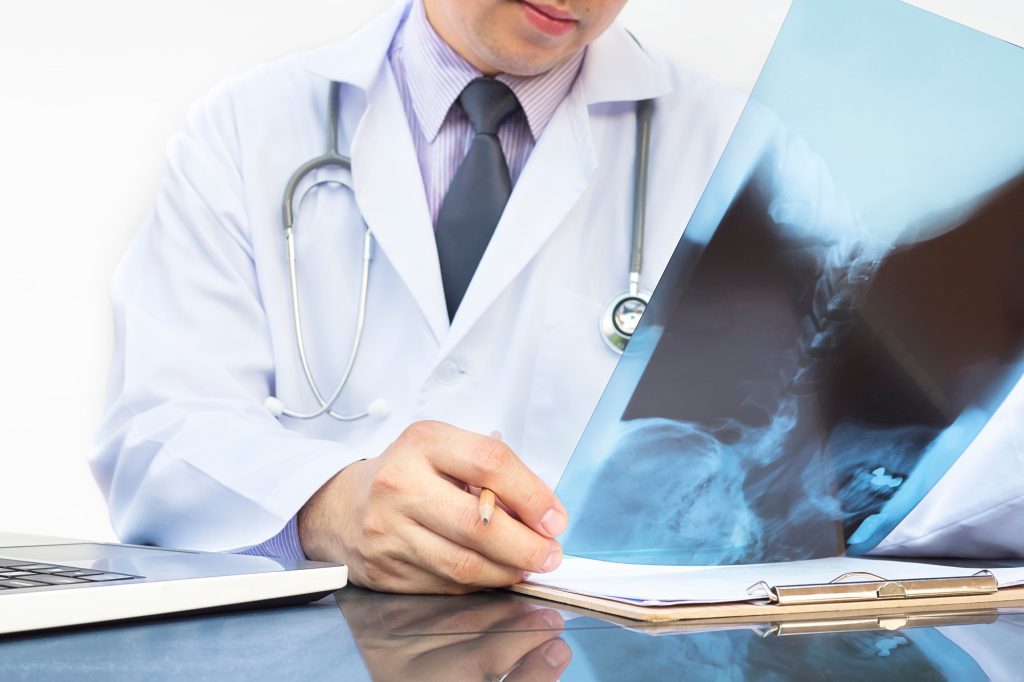- Home
- Departments
- Radiology Laboratory

Radiology Laboratory
HRS Hospital Radiology Laboratory offers fast and detailed diagnostics with modern imaging devices. Our expert radiologists provide accurate diagnoses and support treatment with high-resolution images. With advanced technology and a patient-centered approach, we ensure reliable service.
General Information
In our unit, which aims to maximize patient satisfaction, we have a CR system, a radiology workstation that allows us to analyze examinations in great detail, an X-ray machine for direct and contrast examinations, and a bone densitometry device capable of measuring regional density throughout the body. Our mammography unit is supported by breast ultrasonography when necessary. Additionally, our ultrasound department, where all types of ultrasonographic procedures are performed, includes a 4D device for detailed screening. During pregnancy, the detailed scan we perform captures fetal images, which are recorded on a DVD and given to our patients.
At HRS Ankara Women’s Hospital, the radiology department applies various diagnostic methods, including:
- Direct radiographs
- Digital mammography
- Breast ultrasonography
- Bone densitometry
- HSG (Hysterosalpingography)
- Whole-body (Abdomen) ultrasound examinations
- Urinary system ultrasonography
- Thyroid ultrasonography
- Hip ultrasonography (within the first two months)
- Lower extremity venous and arterial color Doppler examinations
- Renal artery color Doppler examination
- Portal vein color Doppler examination
- Penile color Doppler
- Scrotal color Doppler
- 4D ultrasonography
- Fetal echocardiography
Radiology Laboratory
The Radiology Laboratory is a fundamental component of healthcare services, playing a crucial role in diagnosing diseases using medical imaging technologies. Radiology, one of the most advanced fields in modern medicine, allows us to externally observe internal changes occurring in the body. The Radiology Laboratory aids in early disease detection, monitoring treatment processes, and planning surgical interventions. Imaging data obtained through technologies such as X-rays, magnetic resonance imaging (MRI), computed tomography (CT), and ultrasound are vital for accurate diagnosis and treatment.
What is Radiology?
Radiology is the use of medical imaging techniques to view, examine, and analyze the internal structure of the body. Radiologists study and interpret these images to obtain critical health information about the patient. The Radiology Laboratory performs radiological tests and analyzes the obtained images to assist healthcare professionals.
Radiological imaging typically begins with an initial assessment based on the patient’s complaints. These tests help examine health issues in greater detail and support treatment decisions.
Radiology Laboratory Services
The Radiology Laboratory assists in diagnosing various diseases using different medical imaging techniques. The primary services offered include:
1. X-Ray (Radiography)
X-rays are a widely used imaging method for examining internal organs, bones, and other structures in the body. By passing X-rays through the body, different tissue types create reflections that form digital images. X-rays are commonly used to detect:
- Bone diseases: Fractures, dislocations, and arthritis.
- Lung diseases: Infections, pneumonia, tuberculosis, and cancer.
- Other organs: Used to visualize the abdomen, kidneys, liver, and other organs.
2. Computed Tomography (CT Scan)
CT scanning provides cross-sectional images of the body, allowing detailed examination of internal organs. X-rays are taken from multiple angles and combined by a computer to create 3D images. CT is particularly useful for:
- Cancer screening: Detecting tumors and metastases.
- Trauma assessment: Head injuries, internal organ damage.
- Internal bleeding: Identifying the location and severity of bleeding.
3. Magnetic Resonance Imaging (MRI)
MRI uses magnetic fields and radio waves to obtain detailed images of the body’s internal structures. MRI is especially useful for examining soft tissues, providing more detailed images than X-rays. It is commonly used for:
- Brain diseases: Brain tumors, stroke, multiple sclerosis (MS).
- Joint and muscle conditions: Knee, shoulder, and lower back issues.
- Heart and vascular diseases: Evaluating the heart muscle, vessels, and valves.
4. Ultrasonography (USG)
Ultrasound imaging uses sound waves to create images of internal body structures. It is frequently used for pregnancy monitoring, abdominal organ evaluation, and soft tissue examinations. This non-invasive, quick, and safe method is widely used for:
- Pregnancy monitoring: Fetal development, position, and maternal health.
- Abdominal organs: Liver, gallbladder, kidneys.
- Soft tissue analysis: Thyroid gland, muscles, and lymph nodes.
5. Mammography
Mammography is an X-ray technique used for breast cancer screening. It helps detect abnormal growths, masses, and calcifications in the breast, allowing early cancer detection. Regular screenings increase the chances of diagnosing breast cancer in its early stages.
6. Nuclear Medicine (PET, SPECT)
Nuclear medicine uses weak radioactive substances injected into the body to monitor how these substances are distributed and metabolized. PET (Positron Emission Tomography) and SPECT (Single Photon Emission Computed Tomography) are used for:
- Cancer detection and monitoring: Identifying the spread of cancer cells.
- Heart and brain diseases: Evaluating heart damage after a heart attack and monitoring brain function.
Radiology Laboratory Process
Radiology tests are typically performed in the following steps:
- Patient Preparation: Depending on the test type, patients receive instructions. Some tests require fasting or specific positioning.
- Test Application: Skilled technicians or radiologists operate imaging devices to conduct the test.
- Image Analysis: The obtained images are examined in detail by expert radiologists.
- Result Interpretation: Radiologists interpret the images and prepare a report for the doctors. Additional tests may be recommended if necessary.
- Report Delivery: The radiological test results are sent to the patient’s doctor to determine the treatment process.
Conclusion
The Radiology Laboratory is an essential part of modern medicine, playing a vital role in the accurate and rapid diagnosis of diseases. Advanced imaging technologies facilitate faster treatment decisions and help healthcare professionals provide the best care. The Radiology Laboratory ensures safe, effective, and precise results, contributing to improved patient health and well-being.
Randevu Al
Hastanemiz bölümlerinden bir tanesinden randevu almak için lütfen aşağıdaki butona tıklayın.
Bizi Arayın
Sağlığınız ile ilgili herhangi bir sorun yaşadığınızda lütfen bizi arayın….
